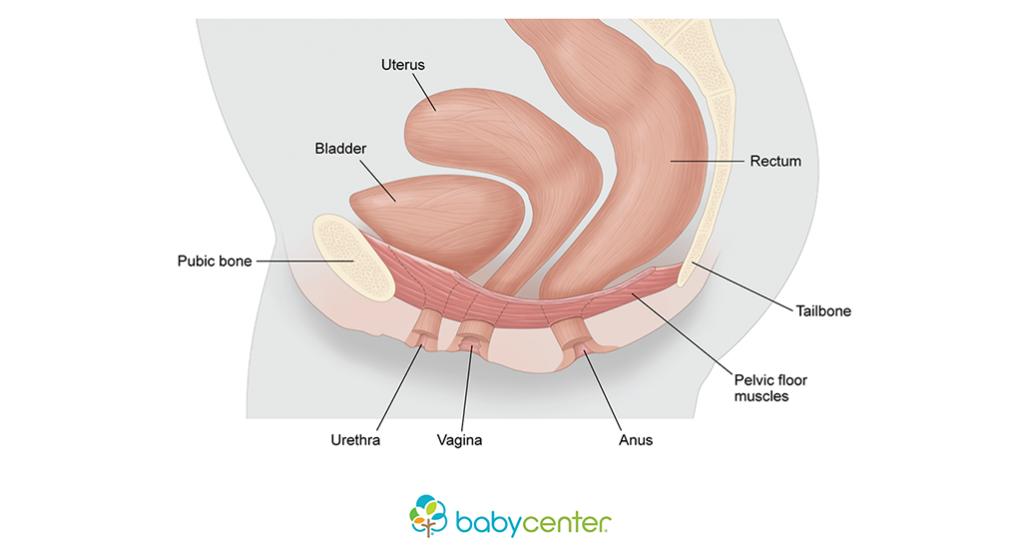For the millions of women dealing with incontinence after childbirth, unrelenting dyspareunia (pain with sex) or chronic pelvic pain, the field of Pelvic Floor Physical Therapy (PFPT) is literally changing lives. PFPT may be something you didn’t even know about that could completely cure discomfort and pelvic floor issues.
Who has been told, “Oh honey, after you have kids it’s normal to pee a little bit when you….laugh – sneeze – cough – jump on a trampoline – run” – insert any other number of activities you would like to do but no longer can because you pee your pants? For years pelvic floor dysfunction has been brushed off as the aftermath of bearing children, something to deal with and “just part of motherhood.” Sadly, for women with pelvic pain or chronic painful sex it is common to have that life altering pain totally disregarded and blamed on other unrelated issues. If you’re reading this and thinking “I’m good- I already do kegels” you should definitely think again! Kegels are just one piece of the much-broader world of pelvic floor health. Telling everyone with a vagina to do kegels in order to heal pelvic floor dysfunction is similar to telling everyone who has had a surgery to just do bicep curls to get back in shape. It’s not a one-exercise-fits-all situation.
Your Pelvic Floor Science Lesson
The muscles that comprise your pelvic floor are in the shape of a shallow bowl stretching from your pubic bone to your tailbone and do the work of cradling your bladder, bowel and uterus. It’s important they stay strong and in shape in order for these three organs to not only function correctly but also stay up where they belong, rather than sag down into your perineum placing pressure on your vagina. Are you a visual person? Below is a drawing of the pelvic floor from www.babycenter.com that does a great job of illustrating the female pelvic floor anatomy, pay attention to the label “pelvic floor muscles”.

There are a number of issues that can stem from pelvic floor dysfunction. Significant pelvic pain at rest, pain during sex or the inability to have sex due to excessive vaginal tone (tightness) or spasms can occur when these muscles are too tight. Sadly many doctors are not trained or do not fully understand this pain to muscle connection and blame it on other health issues or classify it as a “mental health issue.” Carrying children is another culprit responsible for weakening or damaging the pelvic floor muscles and connective tissue. Unfortunately it’s hard to say who will be affected and why some women have issues while others do not. Pregnancy in general, pushing during labor and tearing after birth can lead to incontinence (leaking or inability to control) the bladder, the bowel or even an inability to hold in flatulence when you feel the urge to pass gas (oy vey)! These post baby issues can range from life rocking to minor annoyances.
Okay so….What’s normal and What’s not?
- Pregnancy: After you have a baby (and especially at the end of pregnancy) it can be normal to have weakened pelvic floor muscles. You may notice this in a few different ways.
a. You may leak urine when you pull into the driveway, get close to the toilet or think about urinating. This is called urge incontinence.
b. You may leak small to large amounts of urine when you jump, sneeze, cough or run (or do other activities that place stress on the bladder), also known as stress incontinence.
c. These two types of incontinence are not terribly uncommon during pregnancy or during the healing process in the 6 weeks after birth. What is not normal is if either types of these incontinence issues continue for more than 6 weeks after baby, or even if they are happening very regularly in the first 6 weeks postpartum. If this is you or someone you know skip down to learn about what a pelvic floor PT is and how to get an appointment. - Pelvic Pain: No pelvic pain is normal! At rest, while you’re hanging out, walking, or exercising you should be comfortable down under and pain free. Pelvic pain can feel like a period cramp, but in your vagina, or a spasm or shooting pain into the vagina or rectum. Pelvic pain often gets worse when you exercise, especially when doing core work. If this kind of pelvic pain is happening to you – you don’t have to live or deal with it, the next section will give you more information on what to do next.
- Pain With Sex (Dyspareunia): You are not alone if sex hurts. Three out of four women report having pain with sex at some point in their life. This pain can be in the vagina, in the vulva (the area you see in the mirror when you look at your vagina) or even deep in your pelvis. From time to time discomfort because of a position that doesn’t work for you, dryness associated with not being aroused enough or even dealing with a vaginal condition like yeast or a sexually transmitted infection can be to blame. If you are having persistent pain and you’ve been to the doctor to rule out things like this along with pelvic inflammatory disease, endometriosis, ovarian cysts or cancer, you may be suffering from pain with sex that can be treated. After you have a baby, sex can be uncomfortable for a few sessions but should resume to normal pleasure in time, regularly painful sex after baby is also not normal. You deserve to have a healthy normal sex life and pelvic floor physical therapy could help you get there. Read below for more information
Alright, I may have a pelvic floor issue? Now what?
Whatever you do, don’t despair and go without help OR live with pelvic floor dysfunction. No matter what you’ve heard or what has been normalized in society, women SHOULD NOT leak urine, stool or gas or deal with untreated pelvic pain of any type without help. Additionally these signs are the beginning of issues that are likely bound to get worse and it’s important you proactively treat your pelvic floor now. Untreated pelvic floor weakness can in the worst case lead to your uterus or cervix sagging out of your vaginal opening. This sagging, also known as prolapse, requires surgery or supportive inserted devices to remediate.
Untreated pelvic floor dysfunction can also cause major issues with constipation and chronic pelvic pressure to name a few unfortunate side effects. The amazing upside (yes there is one!) is that just 6-8 weeks of focused treatment and therapy can often-times totally remediate or noticeably lessen the side effects of pelvic floor dysfunction AND protect your pelvic health in the future. Just do it much or what?
What exactly is a pelvic floor physical therapist? What can I expect?
A pelvic floor physical therapist is a PT (they have doctoral degree) who has completed specialized training in the pelvic floor. They are most often times women. When you show up for an appointment a therapist will take your medical history including a detailed personal account of what is going on with your body and what issue brought you in. They will want details about your gynecologic and childbearing history as well as any medications you take. They will analyze your posture – your core strength and posture are surprisingly HUGELY connected – and do an internal exam of the vagina and pelvic floor. They can work to release trigger points or areas of tension in the pelvic floor or give you exercises with weighted insertion devices or dilators. They will also give you exercises to perform at home in-between appointments.
Treatment is typically highly specialized depending on what your health needs are. **Warning** be prepared to have someone do a pretty personal physical exam of your vagina. If you’re able, take it with as light of a heart as you can. They see vaginas routinely and yours is not weird, I promise. The therapists are also pretty good at distraction techniques and keeping you feeling less awkward and more comfortable. Do know that if you have a history of trauma, sexual abuse or assault, this appointment could bring up a lot of difficult feelings, sensations or re-trigger you. You should always disclose any traumatic sexual history so your therapist can treat you slowly and appropriately given your history.
How to get an appointment.
If you think you may suffer from pelvic floor dysfunction or pain or you’d like an assessment to determine if pelvic floor physical therapy is right for you…don’t think twice! An assessment and first appointment can only help. Depending on the medical system and regulations in your state you may be able to self refer (just call and make an appointment) to see a pelvic floor physical therapist, or you may need a referral from your midwife, OB/GYN or primary care provider. Calling your insurance company or a local pelvic floor physical therapy office will help you determine your coverage and how to get in to be seen. Most pelvic floor PT is covered by insurance.
Do your sisters a favor and share this article with a friend. So many women are silently suffering from pelvic floor dysfunction thinking it’s normal or something they “just have to deal with.” Knowledge is power, and often means a healthier and happier life.







